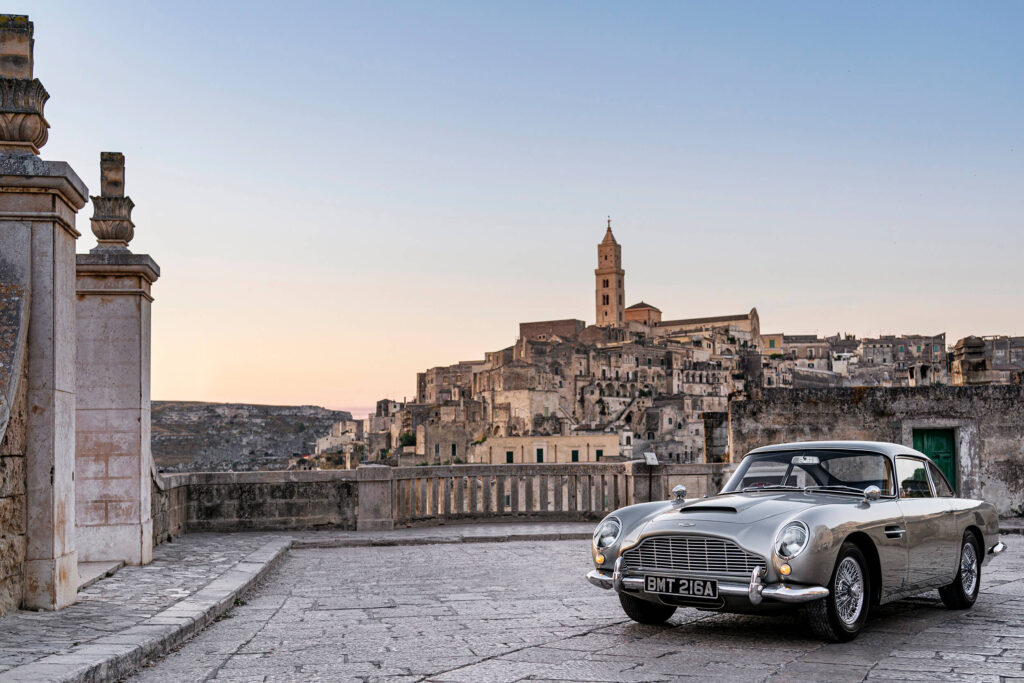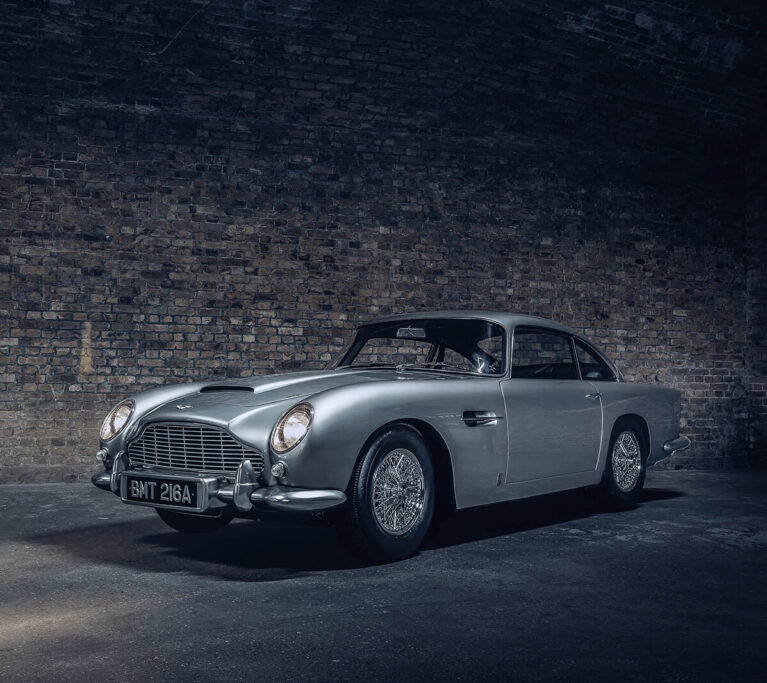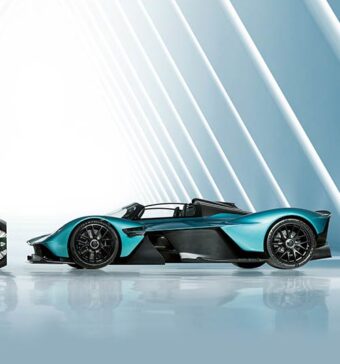The year is 1965. A model shop in Teddington, Middlesex. An eight-year-old boy pushes open the door and looks hopefully at the shopkeeper.
“Has it arrived yet?”
A sympathetic smile. “Not yet, son. Next week, maybe.”
Forgive the trip down memory lane, but that kid was me. I remember itching to spend my pocket money on the 1:43 scale Corgi Toys Goldfinger DB5, complete with front fender ram, machine guns, rear bulletproof screen, tyre slashing wheel spinners, revolving number plates and ejector seat. I wasn’t alone; my friends were desperate to buy one too. To get your hands on one was the ultimate in playground one-upmanship.

Kids grow up, but they carry their dreams with them. That’s why the DB5 today commands a premium, compared with the DB4 that preceded it and the DB6, its successor.
Before Goldfinger, Aston Martins were appreciated by cognoscenti for their race-bred performance, handbuilt craftsmanship and understated style. But they were not a household name. The Midas touch came with 007’s movie world of spies, sex and spectacle, giving Aston Martin global fame and a cachet that it has never lost.
It’s claimed that film producer Cubby Broccoli briefly considered other 1960s British sportscars for James Bond. But the DB5 is a better fit; it’s more muscular than the curvaceous Jaguar E-Type, and as hand-crafted as the Savile Row suits that Sean Connery wore with such panache.


It was the famous Bond set designer Ken Adam who can be credited with the idea of using the DB5. He repeatedly saw one in Silver Birch on his commute to Pinewood Studios, and subsequently convinced Aston Martin to lend them a car for Goldfinger. Alas, upon arrival, it was in red, which simply wouldn’t do for 007, and Adam painted the hyper red to match the car he had originally seen on the road. Thenceforth, a beautiful friendship and partnership was born.
The Silver Birch DB5 is also timeless. It has outlasted three Bonds, appearing with Connery in Goldfinger and Thunderball, Pierce Brosnan in Goldeneye, Tomorrow Never Dies and The World is Not Enough, and Daniel Craig for Skyfall, Spectre and No Time to Die. Three less-than-careful owners and eight movies in 58 years later, and it’s ready for more.
There’s something old-school about Bond, and that’s also true of the DB5. Its predecessor, the DB4, was launched in 1958 as a totally new model and evolved over the subsequent five years. The DB5, which was unveiled in 1963, followed the same formula; Carozzeria Touring ‘Superleggera’ tubular frame and aluminium bodywork, Tadek Marek’s DOHC aluminium straight six, and live rear axle located by a Watts linkage. It was essentially a DB4 Series 5 Vantage with a larger, 4.0-litre engine. Power output was 282bhp for a top speed of 148mph and a 0-60mph time of 7.1 seconds.

Aston Martin’s Newport Pagnell workshops produced 899 DB5 saloons between 1963 and 1965; 65 of these had the optional Vantage engine, which developed 314bhp and could top 150mph. An alternator, electric windows, reclining seats, leather trim and a fire extinguisher were among the specification highlights. Shortly after its introduction, the optional five-speed ZF gearbox became standard, although early models had a David Brown four-speeder.
Inside, the fascia is as purposeful as a fighter plane’s cockpit. There’s no burr walnut veneer, just a dashboard finished in a Black Pearl metallic with dials and switches set randomly around a 180mph Smiths speedometer and a rev counter that’s red-lined at 5,500. The driver’s instrument binnacle echoes the outline of the Aston Martin grille, while the wood-rimmed, three-spoke steering wheel features the David Brown red and white rose badge on the boss.

Today, any DB5 with Bond connections fetches stratospheric prices. One of three surviving examples commissioned for the early Bond films was sold by RM Sotheby’s for $6.4m at Pebble Beach in 2019. Another replica DB5, built as a stunt car by Aston Martin for No Time to Die was sold by Christie’s in September 2022 for £2.922m; then-owners Aston Martin donated the proceeds to charities, including the Prince’s Trust and the Special Boat Services Association. Commander Bond, you feel, would approve.
Such is the unique appeal of the DB5 that in 2020 production restarted after more than 50 years. Aston Martin Works in Newport Pagnell produced 25 DB5 Goldfinger Continuation cars to the precise specification of the movie original. Each took around 4,500 hours of meticulous craftsmanship and features a host of Q-inspired devices. Gadgets include a rear smoke screen, simulated twin front machine guns, battering rams and tyre slashers, while the interior features a simulated radar screen tracker map. Sounds handy for the M25 on a Friday afternoon, but sadly these Continuation DB5s are not legal for the road (and now the programme is completed, Aston Martin have ceased production). But, for the lucky few who did manage to procure one, well, private estates are another matter…
As for that eight-year-old kid, I did eventually get my Corgi Toys Goldfinger DB5. Today, an original one in perfect condition (complete with box, secret instructions and 007 sticker) fetches around £500 on eBay. But I have no regrets for the scuffs and scratches mine suffered as I played out a thousand imaginary car chases. Even at eight, I knew Aston Martins are meant to be driven hard. Just ask James Bond.






























